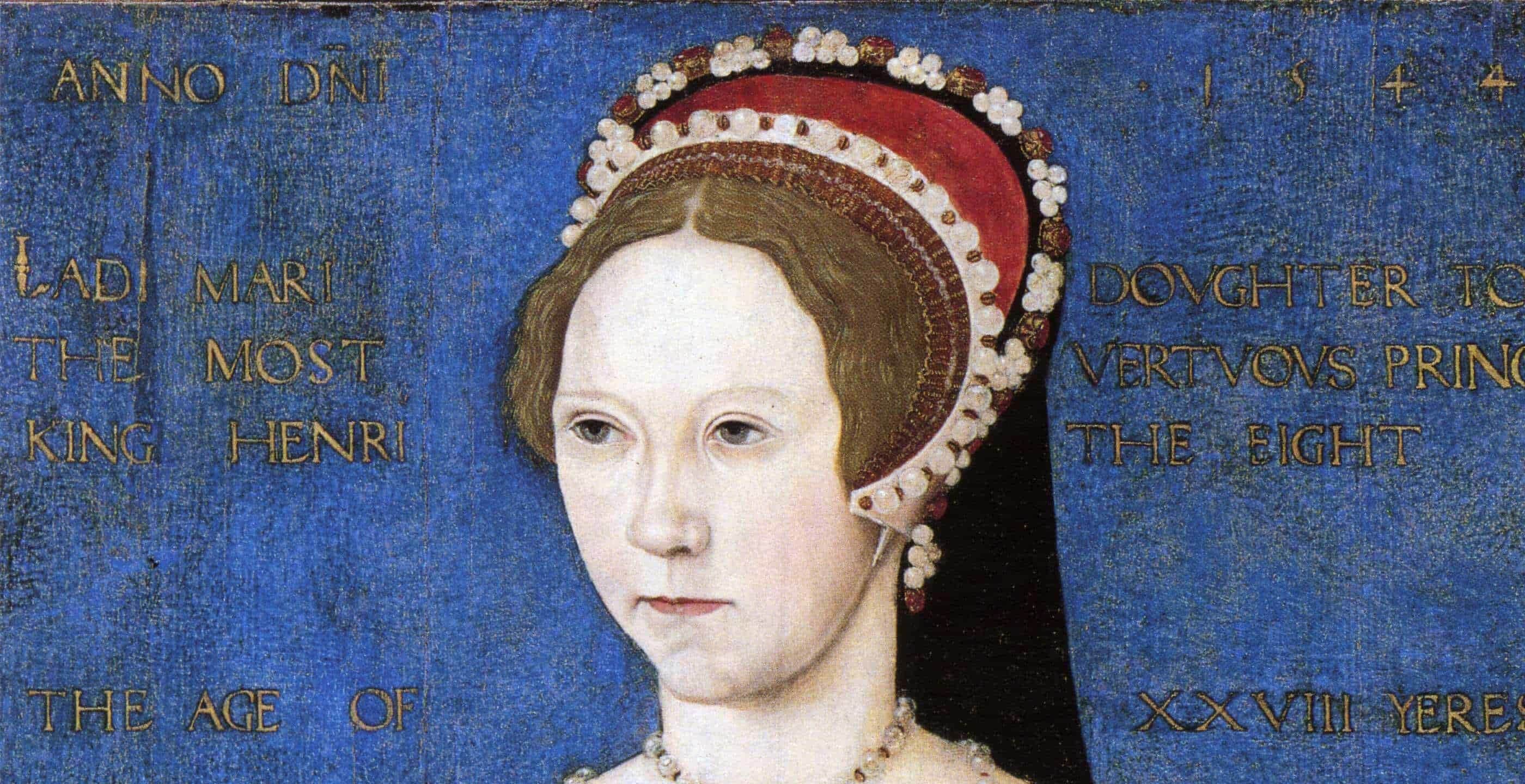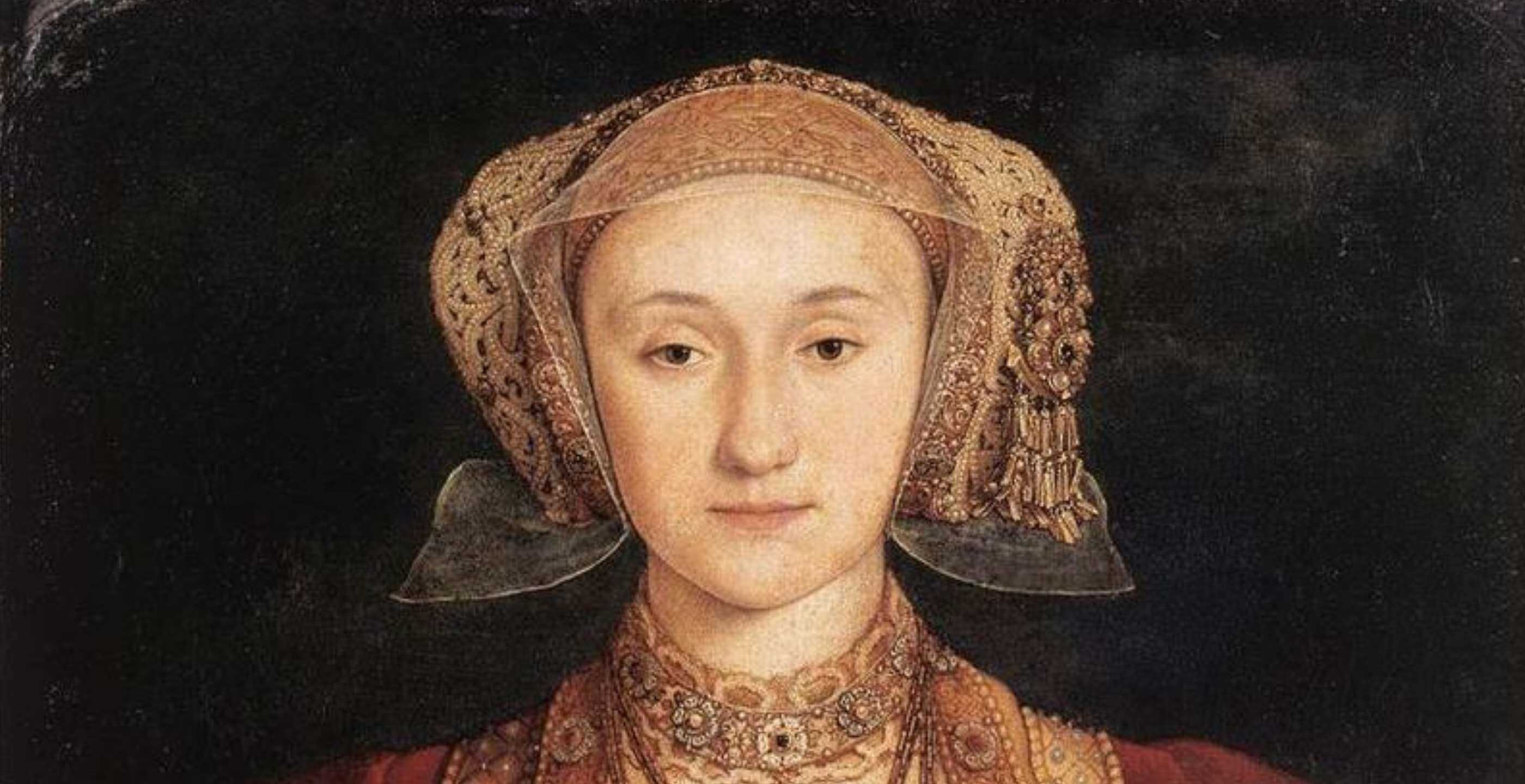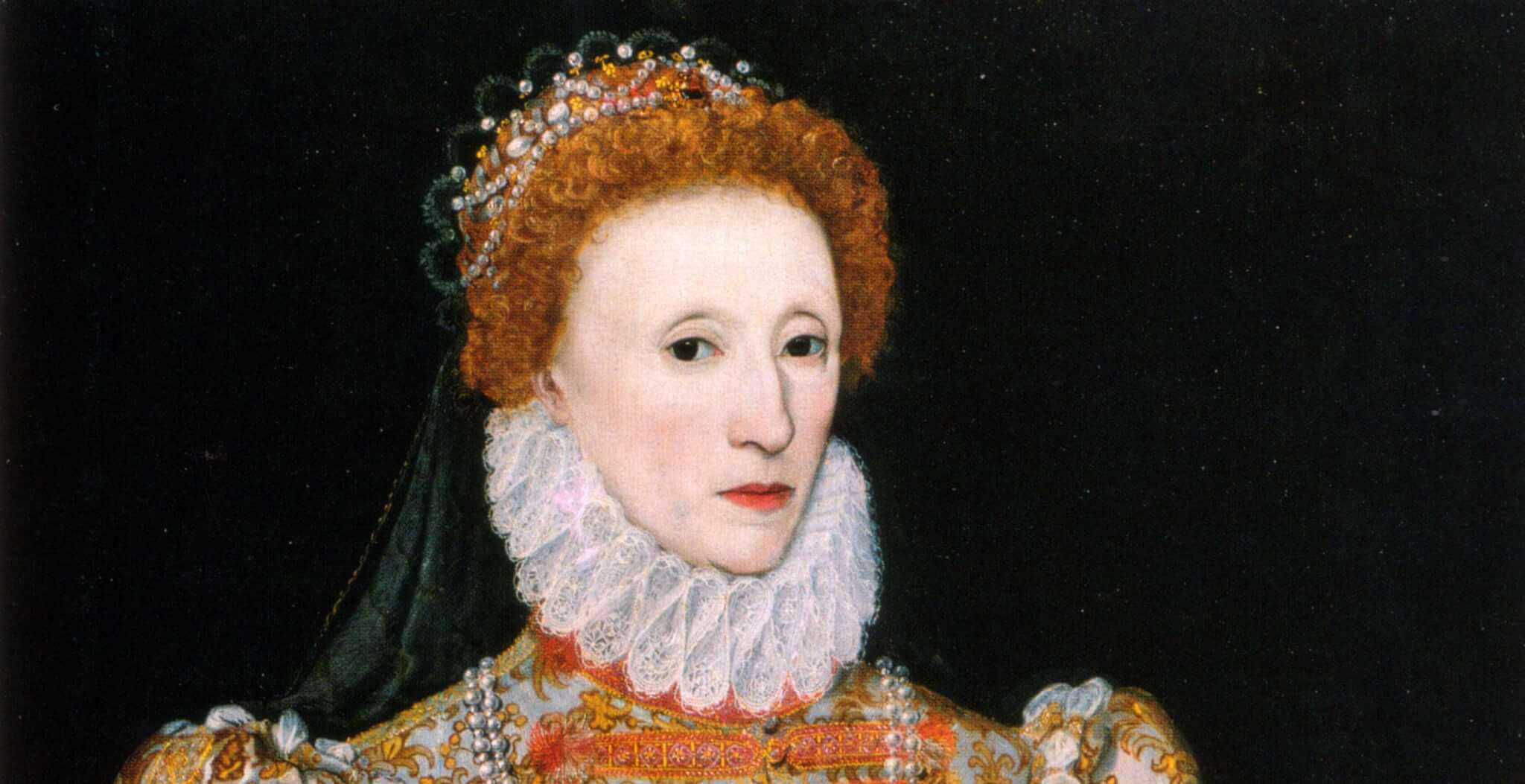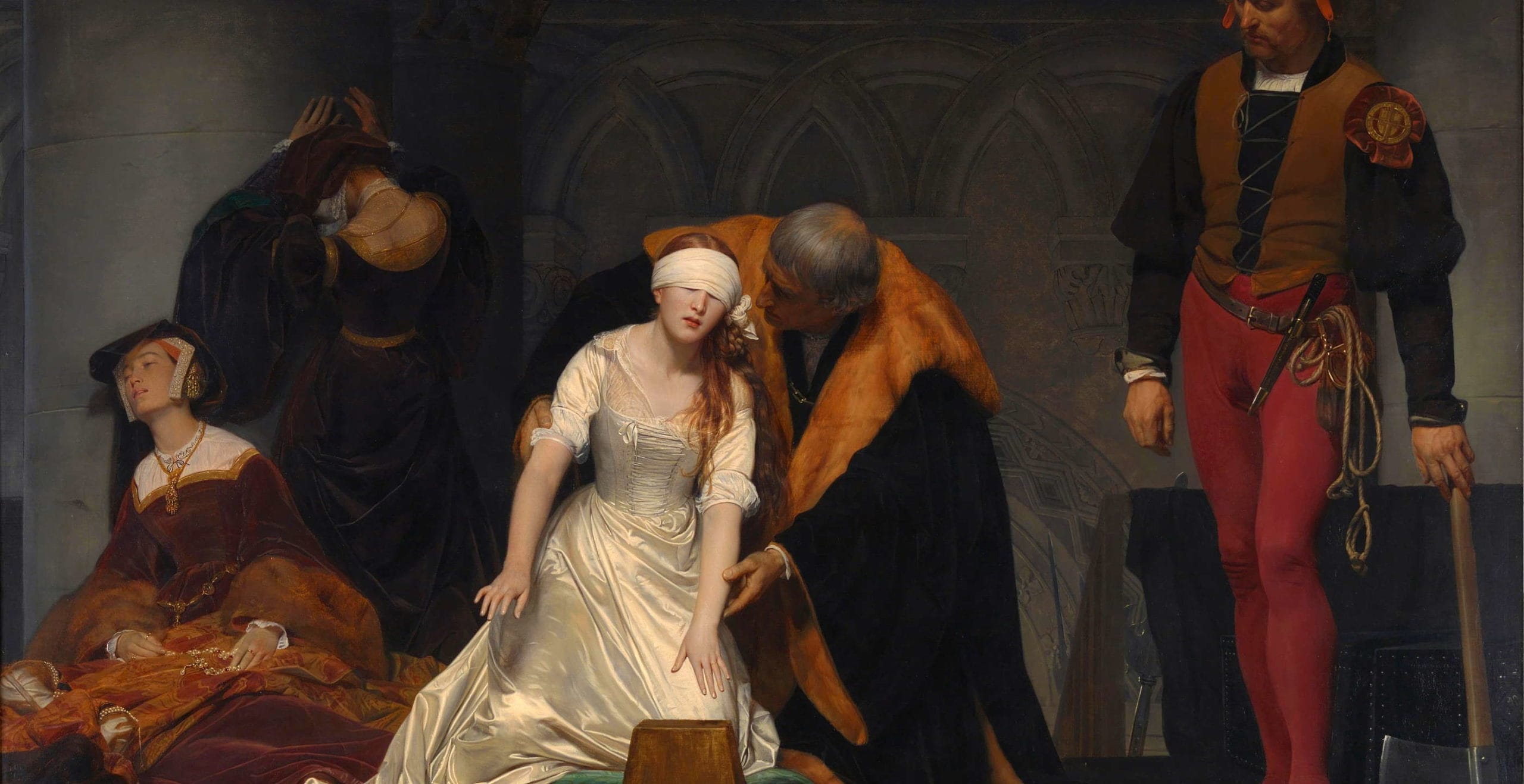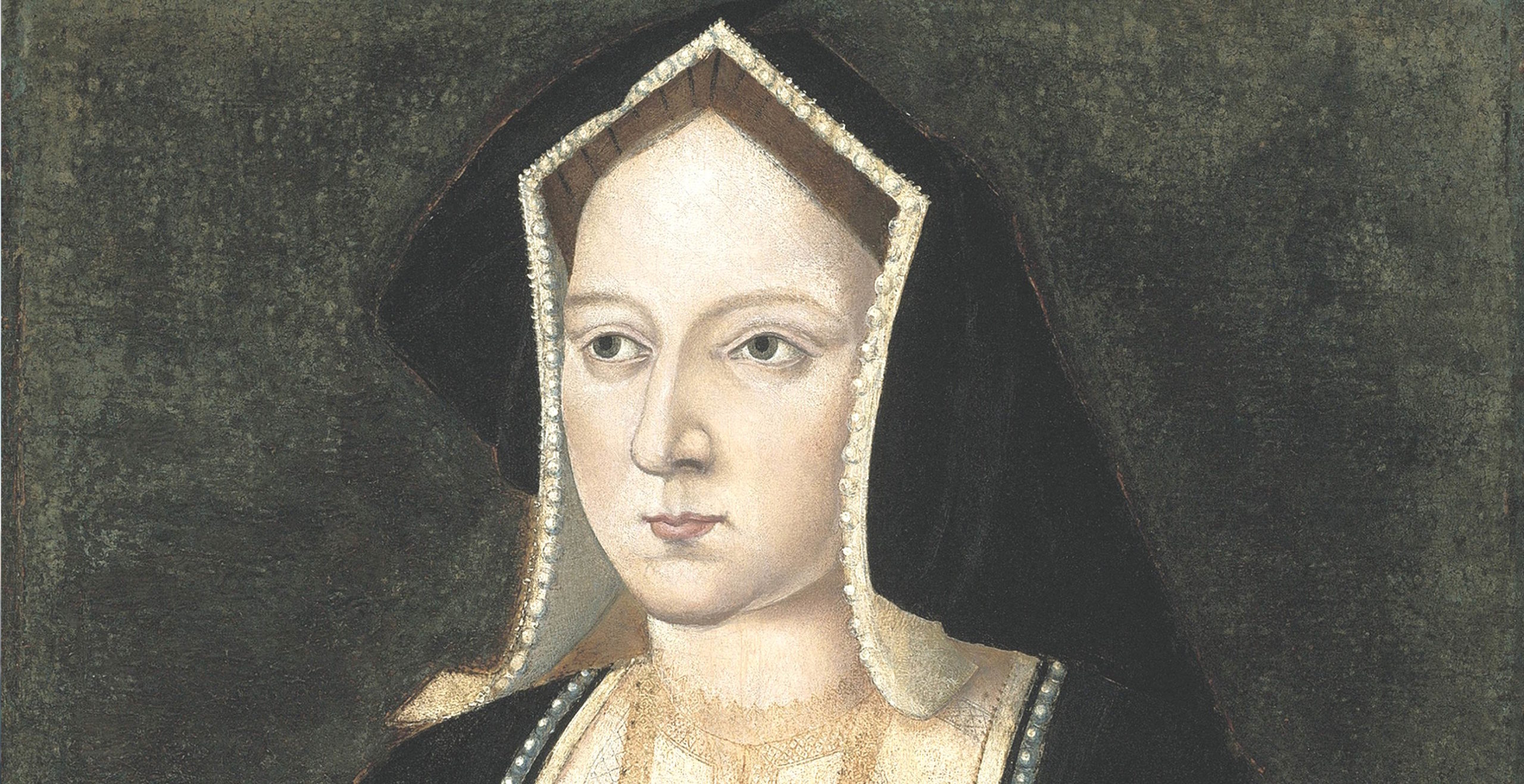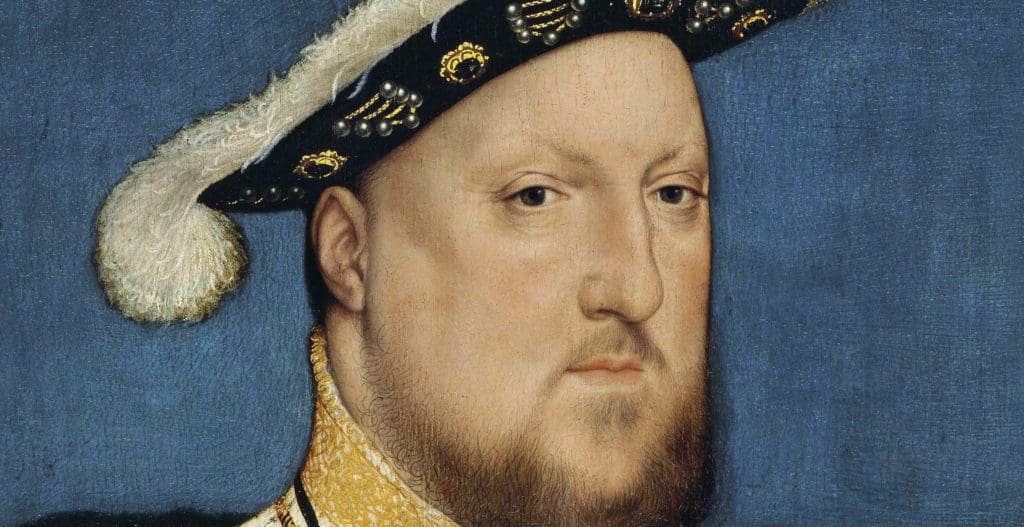The Tudor Dynasty of England, spanning from the late fifteenth century into the early seventeenth century, was filled with many colorful monarchs who impacted the country politically, economically, and socially. One of those monarchs was Mary Tudor, the daughter of King Henry VIII and his first wife, Catherine of Aragon. Mary ruled over England from July 1553 to her death in November 1558.
Her reign as Queen was marked by her steadfast effort to convert England back to Catholicism from Protestantism, which had been established under her father twenty years earlier and then further intensified during the reign of her younger brother, King Edward VI. This religious issue, as well as early experiences during the English Reformation, would significantly impact her life, as well as her policies as queen.
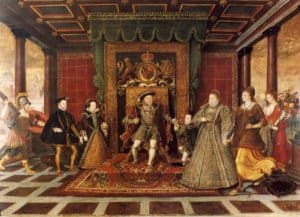 ‘The Family of Henry VIII: An Allegory of the Tudor Succession’, attributed to Lukas de Heere. Mary is shown on the left next to her husband, Philip of Spain.
‘The Family of Henry VIII: An Allegory of the Tudor Succession’, attributed to Lukas de Heere. Mary is shown on the left next to her husband, Philip of Spain.
Born on February 18th, 1516, Mary was the eldest child of King Henry VIII, as well as the only surviving child of his marriage to Catherine of Aragon, and thus was pronounced heir apparent to her father’s throne. During Mary’s childhood she received an education which was heavily influenced by the Catholic religion that would have a significant impact on Mary throughout the rest of her life. Mary was very close to her mother, who made tremendous efforts in grooming Mary to be a future queen. For example, Catherine took great interest in acquiring an exceptional education for her daughter, such as choosing Thomas Linacre, a renowned scholar, to be her daughter’s instructor. Furthermore, Catherine’s deep religious conviction and charitable acts served as a model for Mary, who frequently visited court to be with her mother.
Initially close with both of her parents, Mary’s relationship with her father began to strain when his desire for a male heir increased, his open rejection of her mother became more obvious, and his infatuation with Anne Boleyn intensified. The year 1531, when Mary was fifteen, marked a turning point in Mary’s life when Henry forbade her to see her mother. Henry later broke away from the Catholic Church in order to divorce Catherine and marry Anne. Henry quickly established the Church of England with himself as the supreme head. Mary was declared illegitimate and was replaced as heir apparent by Henry and Anne’s daughter, Elizabeth; she was furthermore banished from court.
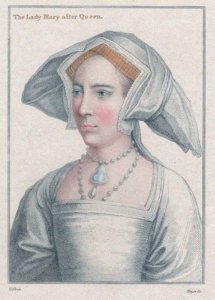
Having been stripped of her title of princess, Mary, now seventeen, was placed in the household of her infant sister, Elizabeth, in December of 1533. During this time, Mary developed a close friendship with Spanish ambassador, Eustace Chapuys, who made multiple unsuccessful attempts to intervene on her behalf at court. Furthermore, Mary also experienced various bouts of illness. Mary was denied any communication or meetings with her mother, despite the fact both suffered from illness during that time. Mary and Catherine were able to send secret messages to each other through the help of loyal servants and physicians. In her letters, Catherine stressed that Mary listen to her father’s commands, but to uphold the Catholic faith. Mary heavily relied on her Catholic faith to emotionally get her through that critical time.
During this time, Mary publicly refused to recognize her father’s marriage to Anne, her own legalized illegitimacy and his claim to be head of the Church of England. When the Act of Supremacy was issued in 1534, Mary refused to take the oath the document required. This legally meant that her refusal was a sign of treason. Although she could have been arrested, charged and possibly executed, Henry refused out of compassion for his daughter. Catherine would eventually succumb to her years of illness and die on January 7th, 1536. Mary was described as “inconsolable” at the loss of her beloved mother. Mary also realized that she was in more danger now that Henry’s pregnant wife, Anne, was officially recognized as the sole queen of England, and that if their child was a son, then he would be recognized as the rightful heir to the throne. However, this would not be the case; Anne soon suffered a miscarriage, and swiftly fell from the King’s good grace, before eventually being executed in May of 1536.
Despite the turn of events, Mary, now twenty, was able to reestablish a relationship with her father after he married Jane Seymour in 1536. Mary’s return to favor was also based on her acceptance of the Church of England and her own illegitimacy. Following the execution of Anne Boleyn, Mary recognized that her position was still not secure and would ultimately need to reconnect with her father in order to obtain any form of political standing. Her father repeatedly demanded her to take the oath recognizing him as the supreme head of the Church of England. Faced with no other alternative, Mary accepted her father’s demands and was officially pardoned. In a letter to her father Mary accepted her father’s authority as the leader of the Church of England, as well as the illegality of her parents’ marriage:
“I do freely, frankly and for the discharge of my duty towards God, the king’s highness and his laws, without other respect, recognize and acknowledge that the marriage formerly had between his majesty and my mother, the late princess dowager, was by God’s law and man’s law incestuous and unlawful.”
Henry also required that Mary write a letter to the Pope and Charles V confirming that her acceptance of Henry’s decree was genuine, and she complied. Her close confidant, Chapuys, also wrote a letter to Charles explaining the strategy of Mary’s acceptance; in return Charles would inform the Pope that she swore out of necessity for her life, but her heart was still Catholic. Following the birth of Henry and Jane’s son, Edward, Mary began to accept the fact that she was not next in line to the throne. After successfully recreating a relationship with her father, Mary was reinstated in the line of succession in 1544, with Edward being first in line, her being second, and Elizabeth third. This was reaffirmed in Henry’s will shortly before his death in 1547.
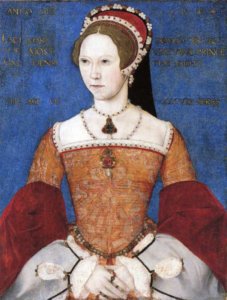
Despite being placed back in the line of succession, Mary’s living situation following Henry’s death once again became dangerous. Although Mary maintained land holdings during her brother’s reign, particularly in East Anglia, she still faced opposition at Edward’s court due to her religious beliefs. Mary’s known, staunch belief in the Catholic religion conflicted with her brother’s Protestant beliefs. During this time Mary infrequently visited court due to her brother’s Lord Protector, Edward Seymour, Duke of Somerset. Seymour was a radical Protestant, and during his time as Lord Protector he successfully managed to abolish Catholic Mass. This meant that English citizens could no longer openly practice the religion in a traditional, mass setting practiced by the Catholic Church. Although Mary objected to this, she still managed to keep Catholic Mass in her household.
However, after the fall and execution of Seymour for essentially kidnapping King Edward VI and for planning to raise an army to maintain his control in government, the rise of John Dudley, the Duke of Northumberland as the new Lord Protector, resulted in Mary’s situation becoming even more dangerous. Mary herself stated that the Duke of Northumberland was the “most unstable man in England.” Dudley’s practice of the Protestant religion was more intense, demanding conformity to the religious doctrines imposed by the government; furthermore he recognized that Mary was a symbol for English citizens who were still Catholic who might revert the country back to the Catholic Church. This was evident when Mary was no longer permitted to practice Mass in her household.
Charles V attempted to intervene on behalf of his cousin by submitting a request to the Privy Council that would grant her the ability to worship freely. In Edward VI’s Chronicle, he describes that within the request Charles threatened war with England had they not let Mary continue to freely worship. Although there were fears amongst the Privy Council, who wanted to avoid war, Charles’s conflicts with the French in Italy dampened any threat he made. At this point, Mary considered fleeing England for Spain. However, just as a Spanish ship was docked for her at the coast at Maldon in Essex, Mary had a change of heart; she refused to leave and was determined to maintain her claim to the throne.
By the spring of 1553, King Edward VI’s health began to rapidly deteriorate. Determined to ensure that the throne was not passed to his Catholic sister, Edward created a latent patent entitled, “My Device for the Succession.” This document excluded both Mary and their sister, Elizabeth, from the succession on the grounds that they were born illegitimate. Instead, the throne would be passed to Lady Jane Grey, the granddaughter of King Henry VIII’s sister. Furthermore, Edward and Northumberland stated their reasoning for supporting Jane was their fear and disdain at the thought of Mary and Elizabeth marrying foreigners, and that the country would ultimately be controlled by a foreign power. They reasoned that Jane, who was married to Northumberland’s son, Guildford Dudley, would produce an English heir and maintain the lineage of the throne. The Duke of Northumberland also knew that Edward did not have much longer to live; he acted swiftly to ensure that Mary did not attempt to take the throne by trying to lure her to court in order to arrest her for continuously refusing to convert. However, Mary was informed of her brother’s impending death and Northumberland’s plot, and instead fled from her residence in Hudson in Hertfordshire, which was closer to court, to Kenninghall, in Norfolk, East Anglia where she had land and estate, as well as political support.
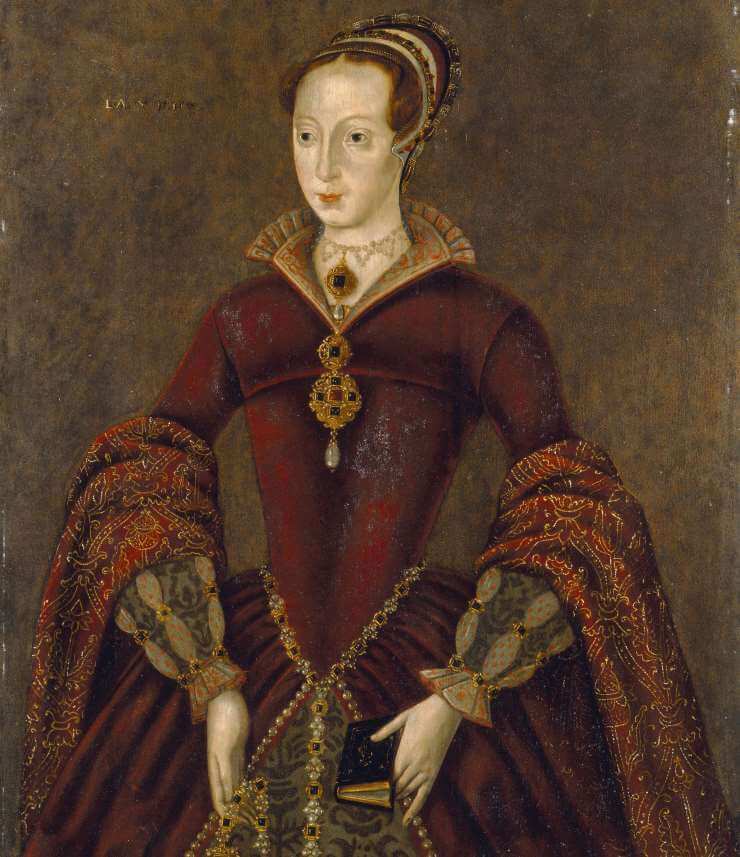
It was there where she eventually learned of Edward’s death at the age of fifteen, and that Lady Jane Grey would be pronounced Queen. However, the announcement of Jane Grey was not entirely welcomed by those in the country. For example, one account made by Gianfrancesco Commendone, the secretary of the Cardinal of Imola, described that while Jane Grey was being led to the Tower to await her coronation, there were mixed feelings of disdain and no cheering among the English citizens. Support of Jane Grey was also created out of fear. Another account made by Spanish merchant, Antonio de Guaras, stated that any person who questioned the legitimacy of Jane Grey, and why Mary was not pronounced queen, would have their ears cut off in order to cause intimidation and ensure the obedience of the English citizens.
Following news of her brother’s death, Mary sent a letter to the Privy Council demanding them to recognize her as Queen, which was mandated in her father’s will:
“You know, the realm and the whole world knoweth; the rolls and records appear by the authority of the King our said father, and that King our said brother, and the subjects of this realm; so that we verily trust there is no good true subject, that is, can, or would, pretend to be ignorant thereof.”
However, the council rejected her claim and instead, Northumberland and his troops marched towards Kenninghall. Mary managed to escape and moved southwards in East Anglia. During this time, Mary gained a large amount of support from both English Catholics and those who supported her claim to the throne as the rightful heir because she was the daughter of King Henry VIII and was legally next in line according to the Act of Succession and Henry’s will, and those, like Thomas, Lord Wentworth, a well-liked and followed nobleman, who despised Northumberland. Mary also received political support from noblemen such as the Earls of Pembroke and Arundel, both members of the Privy Council, who persistently advocated for Mary’s right to the throne as the daughter of King Henry VIII as prescribed in his will. Mary’s overwhelming support eventually caused Northumberland to surrender; the Privy Council turned against Jane Grey and proclaimed Mary as Queen on July 19th, 1553. Northumberland was arrested and later executed by Mary for attempting to prevent her from succeeding to the throne. Mary, now thirty-seven, rode into London in August 1553 officially as Queen.
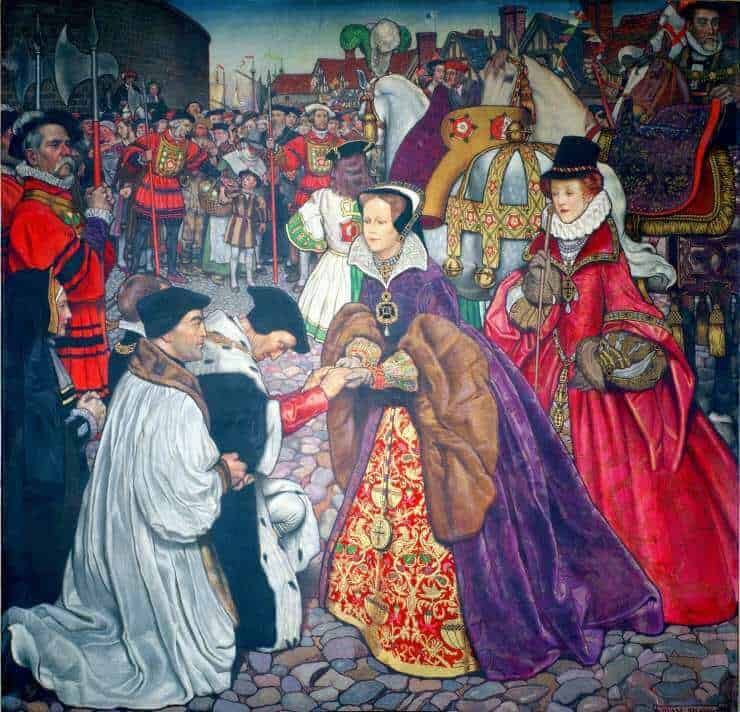
Mary’s early life was filled with much turbulence, as she faced many hardships during her father and brother’s reign. During her father’s reign she had to deny her legitimacy and to publicly change her beliefs, when she argued for them during her brother’s reign she once again faced opposition. Despite these hardships, Mary did eventually become Queen.
By Anthony Ruggiero. I am a High School History Teacher for University Neighborhood High School in Manhattan, New York. I have always had a strong interest in Tudor England, which sparked my interest in History and to become a teacher
Published: 25th September 2018
